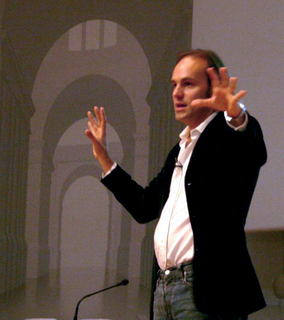
By Oliver Frommel
The Gnome community gathered in Stuttgart, Germany on May 29--31 for the annual Gnome User and Developer European Conference (GUADEC) [1]. The conference had a tight schedule that included four parallel tracks. The rooms were often filled, starting with the very first talk by Keith Packard of Freedesktop.org. A special track showcased new Gnome multimedia applications, such as the video editor Pitivi, the Fluendo streaming server, and the Xiph and Dirac video codecs.
Among the more entertaining speakers were some of the usual suspects, such as the self-proclaimed monkeys of Ex-Ximian. In his keynote Miguel de Icaza - apart from evangelizing Mono - set the agenda of finally making the Gnome desktop usable. In his slightly exaggerated view, Gnome is currently a piece of software that just "doesn't work," and he quoted a usability study Novell carried out in various countries (actually evaluating both KDE and Gnome).
In an effort to make Gnome the platform of choice for the market of migrating mainstream Windows programmers (the "washed masses"), Icaza called for better documentation. He even dared to quote Steve Ballmer in his call to "developers, developers, developers ..." - although he was not shouting or breaking out in a sweat.
Kernel programmer Robert Love demanded more performance metering tools to identify slow spots in the desktop code. He also gave some hints on good ways of system programming for a faster desktop using the latest features of the Linux kernel [2]. A better understanding of those features will improve the design of desktop components, too.
Much of the work on the Gnome desktop these days is done by employees of large companies, such as Novell and Red Hat. The increasing popularity of the Gnome-based Ubuntu distribution adds to this momentum: they shipped more than one million CDs, not counting the downloads. Consequently, it was Ubuntu's Jeff Waugh who laid out his visions of Gnome's 10% overall desktop market share in 2010. Ubuntu funder Mark Shuttleworth (Figure 1) outlined the plans for the upcoming Ubuntu release, which is supposed to "fly on a laptop." Collaboration, according to Shuttleworth, is the most important concept as Ubuntu sets out to explore the "mobile space."
Another star of the event was non-human: Nokia's new Linux-based handheld 770, which is about to leave the prototype stage. The graphical user interface for the 770 is based on Gnome/Gtk with quite a lot of changes, most of which Nokia will feed back to the Open Source community [3]. They announced a donation of about 50,000 dollars to the Gnome foundation, the revenue of the sale of developer machines.
On the user's day, Nathan Wilson of Dreamworks talked about their use of Linux and Gnome in the production of movies like Shrek. To everybody's delight, he showed a short clip from their just-released movie, Madagascar, which features some funny and smart penguins (Figure 2).
Overall the mood of the GUADEC conference was great: everybody was happy with the organization of the event, the interesting talks, and the ongoing Gnome development. Hopefully, next year's GUADEC will be longer. As Nat Friedman notes in his weblog [4], "Three days is not enough ..."
| INFO |
|
[1] GUADEC 2005: http://2005.guadec.org
[2] Robert Love's talks: http://www.rlove.org/talks/ [3] Nokia's Maemo: http://www.maemo.org [4] Nat Friedman's Blog: http://www.nat.org/2005/june/#Six-day-GUADEC |